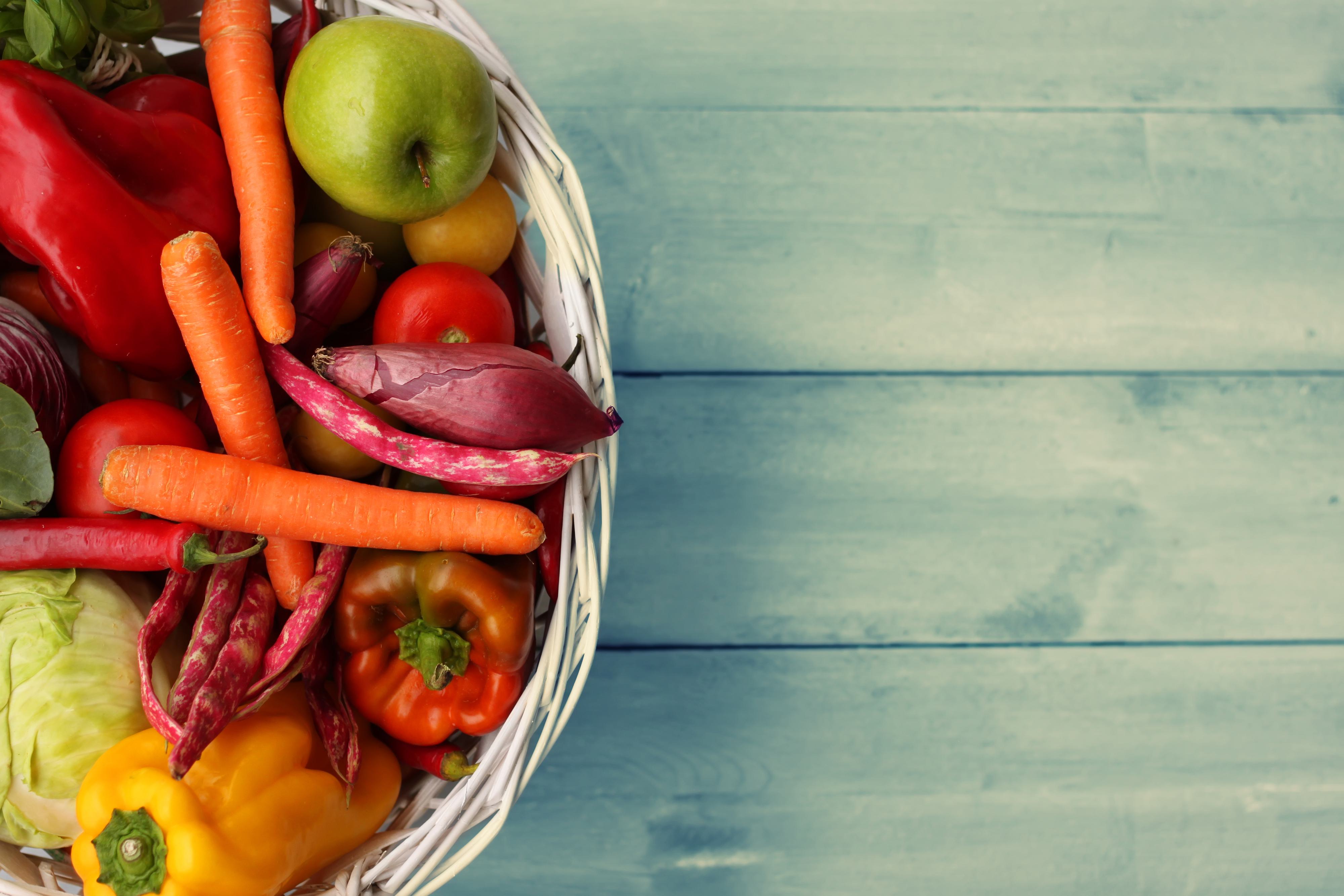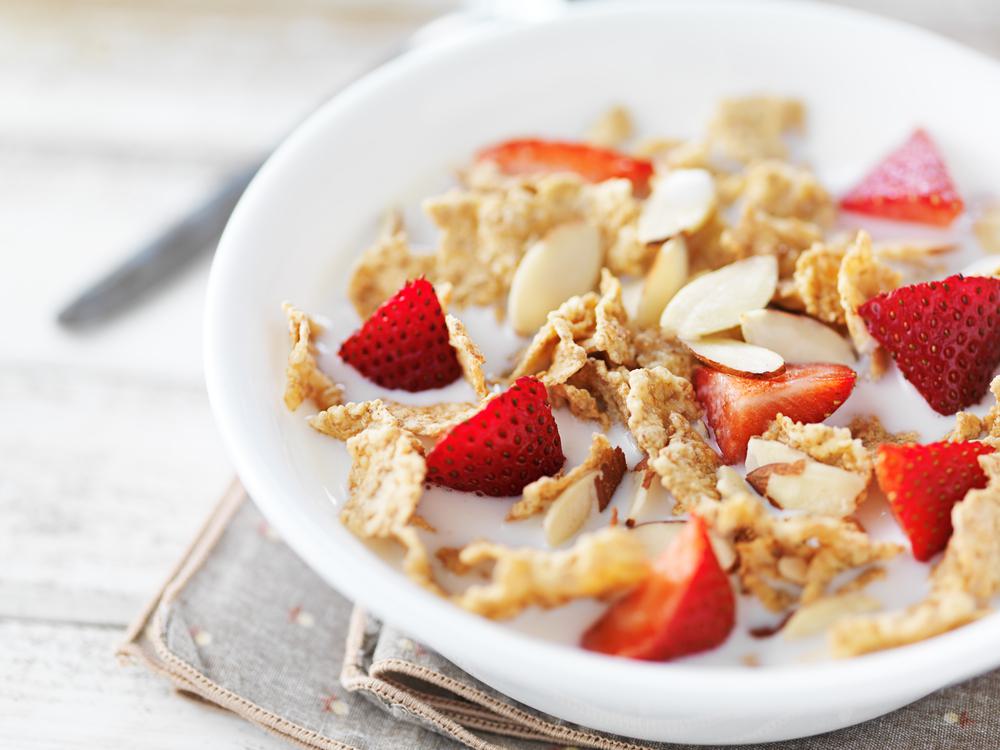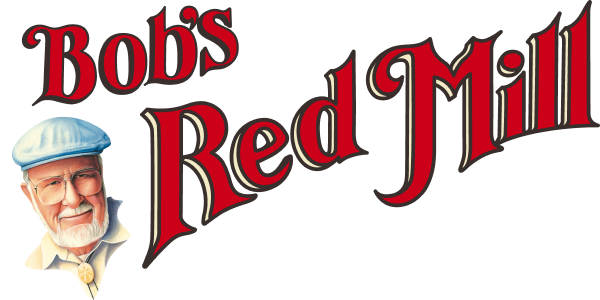Finding out that you have celiac disease can quickly turn your world upside down. Foods that you've enjoyed your entire life, you now have to avoid. On top of all that, it can be incredibly difficult to figure out which foods contain gluten and which do not. Luckily, many foods are naturally gluten free, and the rise in awareness for celiac disease has caused numerous companies to produce gluten free alternatives to some of your favorite products.
While fruits and vegetables are always a safe bet, there are still a list of gluten free foods that youll easily be able to add to your diet. At Bob's Red Mill, we want to help everyone with a gluten intolerance create meals that are not only tasty and flavorful, but also follow a well-balanced diet. With the right tools and information, eliminating gluten from your diet doesn't have to be a tedious task.
The easiest way to make sure you're sticking to a gluten free diet is to eat unprocessed, fresh foods, and to avoid anything that's prepackaged, canned, or frozen.
Snack foods, sweets and packaged foods often contain some sources of gluten, which is why you should always read food labels before making a purchase. If you have a celiac problem or a gluten intolerance, doing your research beforehand will be necessary to ensure that your diet is completely free of gluten. Remember, don't be afraid to read nutritional food labels when shopping, and always ask a lot of questions when eating out. Staying informed is the best way to adapt to a gluten free lifestyle.
This list of gluten free food items will make it easier to stick to a gluten free lifestyle
and avoid all sources of gluten! You can also check out our
gluten free products for all your baking and cooking needs.
Produce

A gluten free lifestyle is perfect for fruit and veggie lovers. Almost all fresh produce is gluten free with the unlikely exception of gluten contaminated fruits and vegetables. So don't worry about snacking on some fresh strawberries or those bananas that will be going bad in a couple of days, if they have been washed you're safe!
If you're purchasing fresh fruit that has been pre-cut by your local grocery store, be sure to ask them where they cut it and if it could have come in contact with any gluten containing foods. Those with high sensitivity to gluten can show symptoms by ingesting even the smallest amount of gluten, so it's important to make sure that your fruits and veggies have not come in contact with any other foods.
Also, note that processed, canned, frozen, and dried produce along with prepackaged smoothies may contain trace amounts of gluten. Be sure to read labels and double check with manufacturers to see if the food is processed in a gluten free factory. Many frozen fruits and veggies are handled in the same factories as wheat products, and cross-contamination is common. The best way to be sure is to do your research or stick to buying fresh produce that you can wash easily.
Examples of Gluten Free Produce:
Apples
Bananas
Oranges
Spinach
Watermelon
Kale
Papaya
Lettuce
Jicama
Tomato
Pineapple
Frozen produce
Canned produce
Processed fruits and vegetables
Dried fruits
Fruit snacks
Meat, Poultry, and Fish
Much like produce fresh meats, poultry, and fish are usually safe to eat on a gluten free diet. However, it is important to double check on the packaging to make sure no seasonings or fillers have been used because they are usually not gluten free. It is best to stay away from prepared meats as much as you can, especially those containing breadcrumbs, which often stem from a wheat source. When dining out avoid breaded meat, poultry, and fish, as well as fried foods, which are commonly prepared in the same oil as gluten containing products. Once again, fresh is always best, and anything with added ingredients should be thoroughly checked before being eaten.
Gluten Free Meat, Poultry, and Fish:
Fresh meat
Fresh poultry
Fresh fish and seafood
Hot dogs
Meat, Poultry, and Fish to Avoid:
Seasoned, prepared, breaded, battered, and fried meat, fish or poultry
Sausages
Self-basting poultry
Processed lunch meats
Imitation meat or seafood
Hamburger meats with fillers
Meatballs
Bacon (check the label)
Canned meats
Beverages
When new to the gluten free lifestyle knowing which drinks to avoid can be extremely tricky. Although most drinks do not contain gluten, the ones that do may surprise you. Most malted beverages, beers, and certain vodkas contain gluten and should not be consumed by those who have celiac disease. Again, one should be cautious and always read labels when purchasing beverages. Even beverages that are considered to be gluten free may have different flavors that are not and can be processed in gluten containing factories. Some flavored coffees and even certain brands of tea contain gluten and should also be avoided.
Gluten Free Beverages:
Sodas
Water
Fruit juices
Sports drinks
Coffee
Milk
Almond milk
Soy milk
Beverages to Avoid:
Ovaltine
Flavored milk, coffee
Certain teas, hot chocolates, and coffee
Beer
Vodka
Soups
Soups can be tricky, and all ingredients should be checked before determining if they are gluten free or not. Often wheat is used as a thickening agent and is found in many cream based kinds of soup. Reading the label, or making soup broth from scratch, is the easiest way to ensure that ingredients do not contain or will not be contaminated with gluten.
Gluten Free Soups:
Lentil soup
Split Pea Soup
Vegetable soup
Soups to Avoid:
Cream based soups
Wheat, barley or rye soups
Potato soups
Condiments
Surprisingly, many common condiments such as soy and barbecue sauce contain gluten, and can cause symptoms in those with celiac disease. The ingredient list will be your best friend when determining whether a condiment contains gluten, and it is important to search for those keywords. However, many condiments are gluten free and can be eaten without any worry of experiencing symptoms.
Gluten Free Condiments:
Ketchup
Mustard
Mayonnaise
Hot Sauce
Worcestershire Sauce
Condiments to Avoid:
Soy Sauce
Barbeque Sauce (Some barbecue sauces do not contain gluten, and several others are being remade as gluten free)
Pre-made marinades
Spice blends
Grains
The truth is, many grains contain gluten, and it can be hard at first to tell which ones are safe for those with celiac disease. Fortunately, companies have begun marketing more
gluten free grains and products, making it easier for those sensitive to gluten to still enjoy the grains they love. When choosing grains, the general rule of thumb is to stay away from wheat in all forms.
Although wheat may not be advertised on a certain product, it can still be in the ingredient list and mixed with other grains such as spelt and couscous. As with all foods, it is important to read the label and rule out any gluten. Wheat can also be hiding in products such as cake mix, cookies, and even ice cream containing chunks of cookie dough or candy bars. When purchasing grains, always check to be sure they were packaged in a gluten free facility and avoid buying grains from barrels or bins as the chances for cross-contamination are much more likely.
Gluten Free Grains:
Rice
Cassava
Corn (maize) including
cornmeal
Soy
Potato
Tapioca
Beans
Sorghum
Quinoa
Millet
Buckwheat groats (also known as kasha)
Arrowroot
Amaranth
Teff
Flax
Chia
Yucca
Gluten free oats
Nut flours
Grains to Avoid:
Wheat starch
Wheat bran
Wheat germ
Couscous
Cracked wheat
Durum
Einkorn
Emmer
Farina
Farro
Fu (common in Asian foods)
Gliadin
Graham flour
Kamut
Matzo
Semolina
Spelt
Barley
Bulgur
Rye
Seitan
Triticale and Mir
Pasta (There are many gluten-free kinds of pasta on shelves now!)
Whole wheat bread
White bread
Cereals and Breads

Thankfully more
gluten free cereals and pasta are being put on the shelves daily. Big named brands are recognizing the need for gluten free options and are responding by making some of their most popular items gluten free. This doesn't mean that all cereals and pasta are gluten free, though. When purchasing pasta or cereal, those that clearly state on the box "gluten free" are your safest bet, however not all gluten free cereals advertise as such. As with everything, it's important to check the ingredients and rule out any gluten contamination.
Gluten Free Cereals:
Rice Chex
Fruity Pebbles
Cocoa Pebbles
Glutino Cereals
Natures Path Cereals
Cereals to Avoid:
Wheat cereals
Rye cereals
Flavored cereals (not all flavored cereals contain gluten, although it is important to check the label to be sure!)
Oats
Much like cereal, it's important to look for oats advertised as gluten free, as many companies process oats with the same equipment that they do wheat products. Oats that are labeled gluten free are ideal for those with celiac disease to eat and are not hard to find. When trying to avoid gluten, be careful when eating oats used in granola bars and other treats as they commonly contain gluten and should not be consumed by those with a gluten sensitivity. Bob's Red Mill Gluten Free Oats or
gluten free granolas are a perfect choice for those trying to avoid gluten. They are processed in a gluten free facility and contain natural and wholesome ingredients.
Candy
Candy is the hardest thing to stay away from on any diet. The sweet and salty flavors draw us in and make it hard to resist temptation. The good news about following a gluten free diet is that you don't have to resist temptation because many candies are gluten free. Though some candies contain gluten, the list is much longer of those that do not. Below is just a general list of candies that do and do not contain gluten although one should always double check for themselves as ingredients differ state to state.
Gluten Free Candies:
3 Musketeers
Butterfingers
Dum Dum Lollipops
Hersey's Milk Chocolate
Hot Tamales
Jolly Ranchers
Laffy Taffy
Lemonheads
Life Savers
Milk Duds
Now & Laters
Reeses Pieces
Skittles
Snickers
Candies to Avoid:
M&M's (not all varieties are gluten free)
Seasonal & Mini Reeses Peanut Butter Cups
Twizzlers
Rice Crispies
Licorice
Candy Corn
Almond Joy Pieces
York Minis
Hidden Sources of Gluten
Gluten contamination doesn't always come from manufacturers or food; it can also come from unknown sources around your house that you come in contact with daily. If you have properly eliminated gluten from your diet and are still experiencing symptoms, it may be time to look for other sources of gluten you may not realize you're being exposed to.
Here's a list of a few places around the house to check for gluten contamination:
Toaster
Whether you've just recently switched from regular to gluten free bread, or you're living with people who commonly eat regular bread your toaster may have traces of gluten in it that can cause a reaction. Before placing your gluten free bread into the toaster make sure it has been cleaned and de-crumbed thoroughly. If you are living with others and sharing a toaster, it may be time to purchase your own or designate one side of it to gluten free bread only. Gluten sensitivity is severe, and even the smallest of amounts can wreak havoc on your immune system.
Spreads
Spreads are another huge culprit of gluten contamination, especially if you live in a house with gluten eating individuals. Double dipping knives can cause crumbs to be spread onto your gluten free foods and stir up a reaction. The safest way to avoid gluten all together is to purchase separate spreads for yourself. If different condiments are not an option, then it may be time to enforce a no double dipping rule, or invest in squeeze condiments where the knife does not come in contact with the actual spread.
Medicines, Vitamins, and Supplements
The efforts being made to keep yourself healthy may be hurting your immune system. It is typical for certain medications, vitamins, and supplements to contain wheat ingredients and fillers that may be irritating your gluten sensitivity. Key ingredients to look for in gluten containing medications and vitamins are "modified food starch" and "wheat starch." Though many prescribed medications usually do not contain gluten, it is important to talk with your doctor and pharmacist to be sure.
Potential Grain Based Fillers in Supplements and Medication
Wheat germ
Food glaze
Food starch
Maltodextrin
MSG Hydrolyzed vegetable protein
Textured plant protein
Artificial flavors and colors
Natural flavors dextrin
Protein Powders
Protein powders are extremely common in households nowadays and are often overlooked when it comes to a gluten free diet. Although most whey proteins don't contain gluten, there are specific ingredients to be wary of when purchasing a protein powder. Before committing to any protein powder be sure to do your research and check multiple sources to be sure that it's gluten free.
It is also important to avoid the ingredient "Glutamine peptides," which is a hydrolyzed wheat protein that contains gluten. Due to its lower price, companies commonly use glutamine peptides to dilute or fill their powders. Even if the product states, that it is "100% natural whey protein" be sure to read and reread the labels to be sure that gluten isn't hiding among the ingredients.



 A gluten free lifestyle is perfect for fruit and veggie lovers. Almost all fresh produce is gluten free with the unlikely exception of gluten contaminated fruits and vegetables. So don't worry about snacking on some fresh strawberries or those bananas that will be going bad in a couple of days, if they have been washed you're safe!
If you're purchasing fresh fruit that has been pre-cut by your local grocery store, be sure to ask them where they cut it and if it could have come in contact with any gluten containing foods. Those with high sensitivity to gluten can show symptoms by ingesting even the smallest amount of gluten, so it's important to make sure that your fruits and veggies have not come in contact with any other foods.
Also, note that processed, canned, frozen, and dried produce along with prepackaged smoothies may contain trace amounts of gluten. Be sure to read labels and double check with manufacturers to see if the food is processed in a gluten free factory. Many frozen fruits and veggies are handled in the same factories as wheat products, and cross-contamination is common. The best way to be sure is to do your research or stick to buying fresh produce that you can wash easily.
Examples of Gluten Free Produce:
Apples
Bananas
Oranges
Spinach
Watermelon
Kale
Papaya
Lettuce
Jicama
Tomato
Pineapple
Frozen produce
Canned produce
Processed fruits and vegetables
Dried fruits
Fruit snacks
A gluten free lifestyle is perfect for fruit and veggie lovers. Almost all fresh produce is gluten free with the unlikely exception of gluten contaminated fruits and vegetables. So don't worry about snacking on some fresh strawberries or those bananas that will be going bad in a couple of days, if they have been washed you're safe!
If you're purchasing fresh fruit that has been pre-cut by your local grocery store, be sure to ask them where they cut it and if it could have come in contact with any gluten containing foods. Those with high sensitivity to gluten can show symptoms by ingesting even the smallest amount of gluten, so it's important to make sure that your fruits and veggies have not come in contact with any other foods.
Also, note that processed, canned, frozen, and dried produce along with prepackaged smoothies may contain trace amounts of gluten. Be sure to read labels and double check with manufacturers to see if the food is processed in a gluten free factory. Many frozen fruits and veggies are handled in the same factories as wheat products, and cross-contamination is common. The best way to be sure is to do your research or stick to buying fresh produce that you can wash easily.
Examples of Gluten Free Produce:
Apples
Bananas
Oranges
Spinach
Watermelon
Kale
Papaya
Lettuce
Jicama
Tomato
Pineapple
Frozen produce
Canned produce
Processed fruits and vegetables
Dried fruits
Fruit snacks
 Thankfully more gluten free cereals and pasta are being put on the shelves daily. Big named brands are recognizing the need for gluten free options and are responding by making some of their most popular items gluten free. This doesn't mean that all cereals and pasta are gluten free, though. When purchasing pasta or cereal, those that clearly state on the box "gluten free" are your safest bet, however not all gluten free cereals advertise as such. As with everything, it's important to check the ingredients and rule out any gluten contamination.
Gluten Free Cereals:
Rice Chex
Fruity Pebbles
Cocoa Pebbles
Glutino Cereals
Natures Path Cereals
Cereals to Avoid:
Wheat cereals
Rye cereals
Flavored cereals (not all flavored cereals contain gluten, although it is important to check the label to be sure!)
Thankfully more gluten free cereals and pasta are being put on the shelves daily. Big named brands are recognizing the need for gluten free options and are responding by making some of their most popular items gluten free. This doesn't mean that all cereals and pasta are gluten free, though. When purchasing pasta or cereal, those that clearly state on the box "gluten free" are your safest bet, however not all gluten free cereals advertise as such. As with everything, it's important to check the ingredients and rule out any gluten contamination.
Gluten Free Cereals:
Rice Chex
Fruity Pebbles
Cocoa Pebbles
Glutino Cereals
Natures Path Cereals
Cereals to Avoid:
Wheat cereals
Rye cereals
Flavored cereals (not all flavored cereals contain gluten, although it is important to check the label to be sure!)